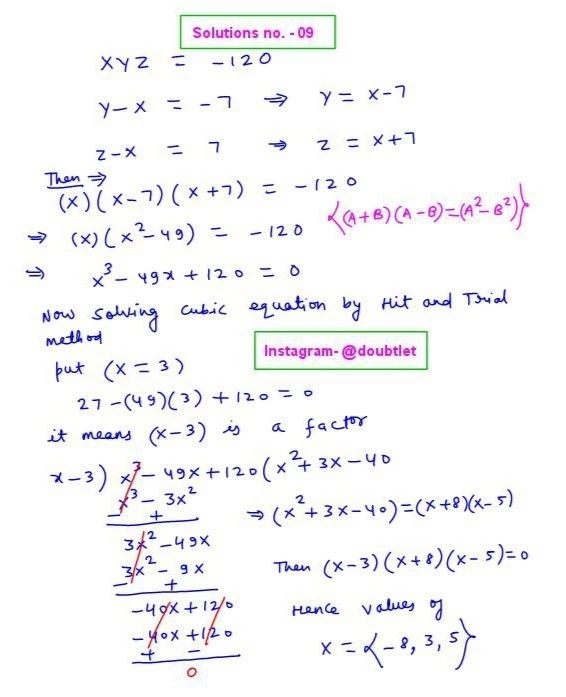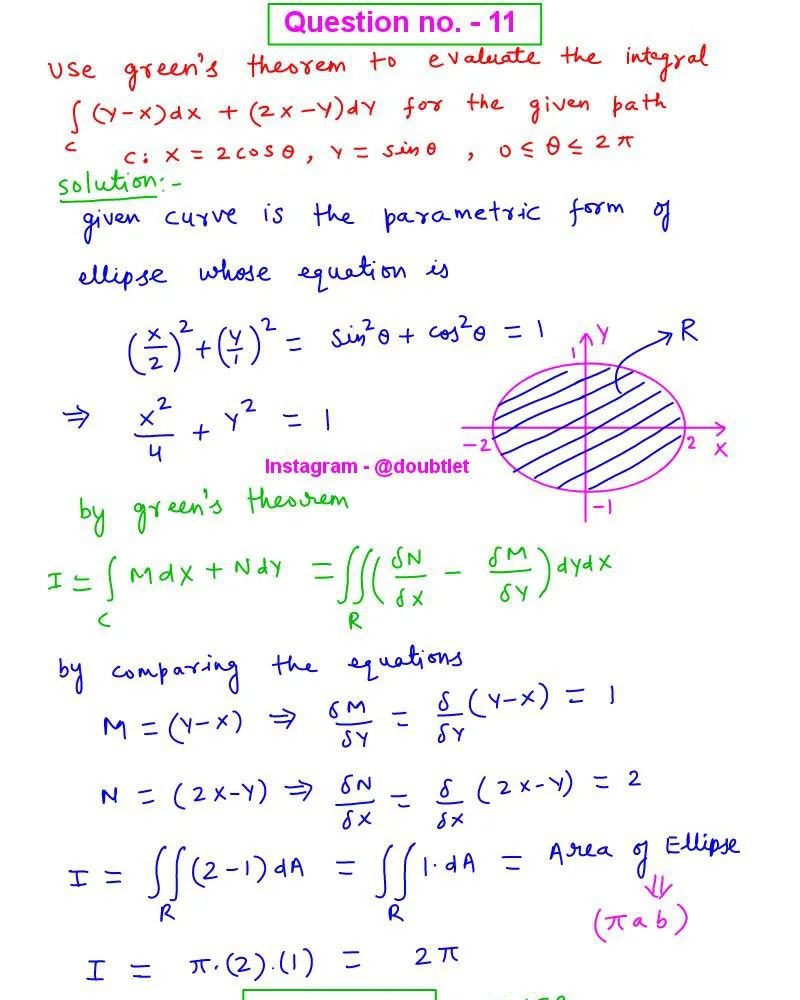
Neetesh Kumar | December 7, 2024
Calculus Homework Help
Contact me if you need help with Homework, Assignments, Tutoring Sessions, or Exams for STEM subjects.
You can see our Testimonials or Vouches from here of the previous works I have done.
Get Homework Help
Step-by-step solution:
Step 1: Take the Laplace transform of both sides
The Laplace transform of the equation is:
L(y′′)−2L(y′)+5L(y)=L(−8e−t).
Use the Laplace transform rules:
- L(y′′)=s2Y(s)−sy(0)−y′(0),
- L(y′)=sY(s)−y(0),
- L(y)=Y(s),
- L(e−t)=s+11.
Substitute these into the equation:
[s2Y(s)−sy(0)−y′(0)]−2[sY(s)−y(0)]+5Y(s)=−8⋅s+11.
Step 2: Substitute initial conditions
From y(0)=2 and y′(0)=12, substitute into the equation:
[s2Y(s)−2s−12]−2[sY(s)−2]+5Y(s)=−s+18.
Simplify:
s2Y(s)−2s−12−2sY(s)+4+5Y(s)=−s+18.
Combine terms involving Y(s):
[s2−2s+5]Y(s)=s+1−8+2s+8.
Simplify the right-hand side:
[s2−2s+5]Y(s)=s+1−8+2s+8.
Step 3: Solve for Y(s)
Y(s)=s2−2s+5s+1−8+2s+8.
Combine into a single fraction:
Y(s)=(s+1)(s2−2s+5)−8+(2s+8)(s+1).
Expand the numerator:
−8+(2s+8)(s+1)=−8+2s2+2s+8s+8=2s2+10s.
Thus:
Y(s)=(s+1)(s2−2s+5)2s2+10s.
Step 4: Partial fraction decomposition
Decompose Y(s) into partial fractions:
Y(s)=s+1A+s2−2s+5Bs+C.
Multiply through by the denominator:
2s2+10s=A(s2−2s+5)+(Bs+C)(s+1).
Expand the terms:
- A(s2−2s+5)=As2−2As+5A,
- (Bs+C)(s+1)=Bs2+Bs+Cs+C=Bs2+(B+C)s+C.
Combine:
2s2+10s−8=As2−2As+5A+Bs2+(B+C)s+C.
Group terms:
(A+B)s2+(−2A+B+C)s+(5A+C)=2s2+10s.
Compare coefficients:
- A+B=2 (for s2),
- −2A+B+C=10 (for s),
- 5A+C=0 (constant).
Step 5: Solve for A, B, and C
From A+B=2, solve for B:
B=2−A.
Substitute B=2−A into −2A+B+C=10:
−2A+(2−A)+C=10.
−3A+2+C=10.
C=8+3A.
Substitute A and C into 5A+C=0:
5A+(8+3A)=0.
8A+8=0.
8A=−8.
A=−1.
Now substitute A=−1 into B=2−A:
B=2−(−1)=3.
Finally, substitute A=−1 into C=8+3A:
C=8+3(−1)=8−3=5.
Step 6: Rewrite Y(s)
Substitute A=−1, B=3, and C=5:
Y(s)=s+1−1+s2−2s+53s+5.
Step 7: Take the inverse Laplace transform
-
The inverse Laplace of s+1−1 is:
L−1(s+1−2)=−e−t.
-
For s2−2s+53s+5, rewrite the denominator as (s−1)2+4.
The term becomes:
(s−1)2+43s+5=(s−1)2+43(s−1)+8.
Split into two parts:
(s−1)2+43(s−1)+(s−1)2+48.
- The inverse Laplace of (s−1)2+43(s−1) is 3etcos(2t).
- The inverse Laplace of (s−1)2+48 is 4etsin(2t).
Final Solution
Combine all terms:
y(t)=−e−t+3etcos(2t)+4etsin(2t).
Please comment below if you find any error in this solution.
If this solution helps, then please share this with your friends.
Please subscribe to my
Youtube channel for video solutions to similar questions.
Keep Smiling :-)














Leave a comment